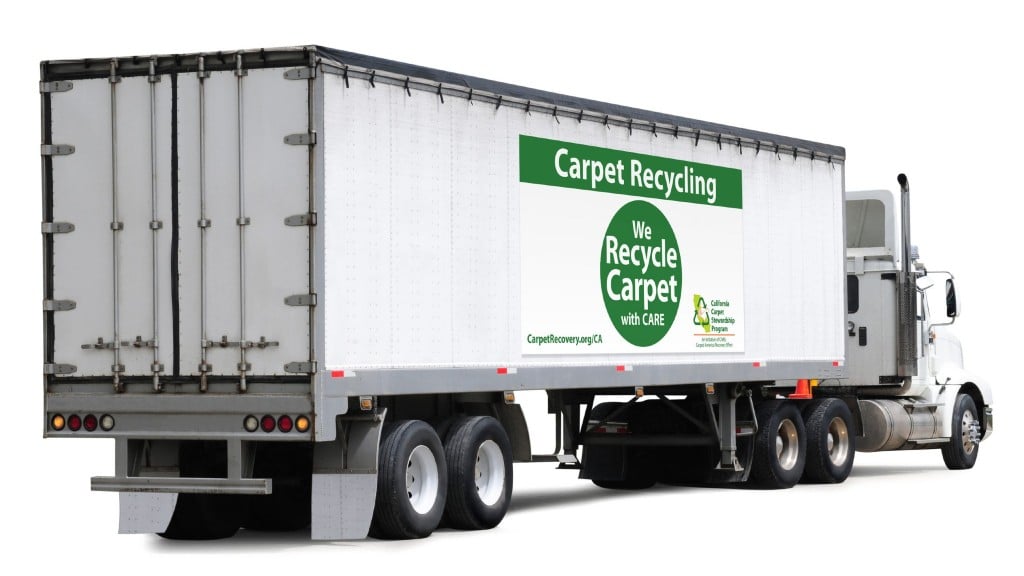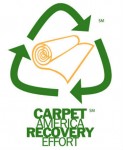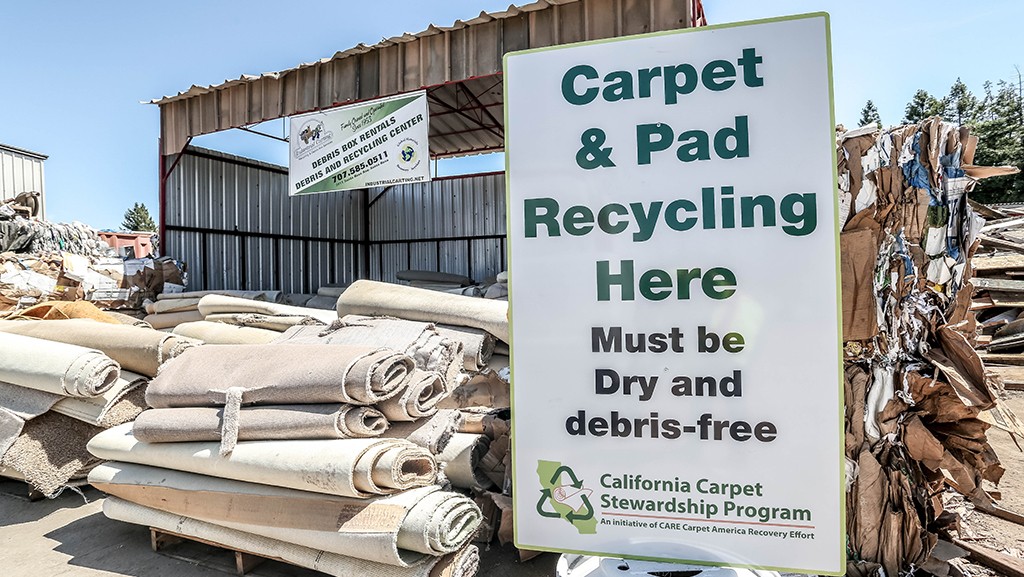California carpet recycling program is improving rates, yield and advancing technology

At a time of immense strain on recycling efforts across the country, carpet recycling saw significant progress in 2020 in California, according to the California Carpet Stewardship Program 2020 Annual Report.
The California Program achieved an all-time high recycling rate of 23.2 percent in Q4 2020, with an overall annual recycling rate of 21 percent in 2020. While it did not meet the target 24 percent goal, the recycling rate for this fossil-fuel-based material is up 107 percent over the past five years.
Sixty-eight percent of the carpet collected in 2020 in California was recycled. This percentage, called the yield, has grown dramatically over the life of the program from just 28 percent nine years ago, thanks to expanded processing capacity, growing markets for post-consumer carpet materials and technological advances. Major market development efforts, particularly in the creation of a market for carpet backing material, also known as PC4, has led to this 68 percent yield rate.
CARE Executive Director Bob Peoples notes, "We are incredibly proud of the determination and resilience shown by the California carpet recycling community. Thanks to their efforts, in the past five years alone, 292 million pounds of discarded carpet was kept out of California landfills - equivalent to more than 10,000 full-loaded 53-foot trailers of carpet - and recycled into useful new products."
According to the California Carpet Stewardship Program's 2020 Annual Report:
- The California Program achieved an all-time program high recycling rate of 23.2 percent in Q4, with an overall annual recycling rate of 21 percent in 2020. This is short of the Program's 24 percent goal but reflects steady year-over-year compounded growth of 20 percent per year, despite a global pandemic and other challenges, while other materials' recycling rates have declined.
- 67 million pounds of post-consumer carpet was diverted from California landfills.
- 53 million pounds of recycled output was produced.
- Over 72 million tons of greenhouse gas emissions (MTC02E) was saved.
- $16.9 million in subsidies supported collectors, processors and manufacturers of recycled carpet material.
- Nearly $1.1 million in grant funding was paid in 2020. Since 2017, CARE has paid over $8 million to grow carpet recycling via grants for capital improvement, product testing and expansion of collection.
In addition, CARE's prompt and multi-faceted emergency COVID-19 Action Plan has provided critical support to the industry as it faces economic and operational challenges. The Action Plan included special payouts in 2020 totaling $1.6 million to collector/sorters, processors and manufacturers.
Collection of carpet is a vital part of the recycling process. By the end of 2020, there were 83 CARE-sponsored public Drop-off Sites in 54 counties (an increase of 150 percent the in number of sites from 2016), in addition to the over 230 private collection sites in the state.
Through subsidies, grants and technical assistance, CARE supports increased collection and processing of carpet into products containing recycled carpet material. Twenty-four vendors currently incorporate carpet in 76 products for a variety of industrial and retail applications, including automotive plastic components, rubber transition mats, building materials and absorbency products.



